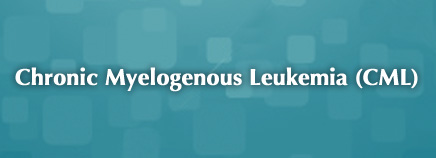
About Leukemia
Leukemia is a type of cancer that affects the body’s white blood cells (WBCs).
Normally, WBCs help fight infection and protect the body against disease. But in leukemia, WBCs turn cancerous and multiply when they shouldn’t. This causes too many abnormal WBCs, which then interfere with the body’s ability to function normally.
If too many of these WBCs are made, a child will develop chronic myelogenous leukemia (CML). While this type of leukemia is much more common in adults, it can affect children, too.
Thanks to advances in therapy and clinical trials, the outlook for kids with CML is promising.
Causes
CML is caused by a chromosomal problem. The 23 pairs of chromosomes in the body each contain segments of DNA called genes. Genes are essentially the body’s blueprints.
CML happens when a piece of chromosome 22 breaks off and switches places with a piece of chromosome 9. (This piece, containing parts of both chromosome 9 and chromosome 22, is known as the Philadelphia chromosome.) The combination results in the cancer gene known as BCR-ABL. This is the gene that instructs the body to make too many abnormal WBCs.
Although researchers know which genes are involved in the development of CML, they do not yet know why some people get it and others do not.
Signs and Symptoms
CML tends to progress slowly, so at first a child may have few or no symptoms. In fact, symptoms can take months or even years to develop. The symptoms of all types of leukemia are generally the same and include:
- tiredness and weakness
- swollen lymph nodes
- recurrent infections (like bronchitis or tonsillitis)
- fever
- easy bruising
- bone and joint pain
- abdominal pain (caused by abnormal blood cells building up in organs like the kidneys, liver, and spleen)
Diagnosis
Often no symptoms appear for quite a while with CML, so it’s commonly discovered when a child has a routine blood test for other reasons. A doctor who suspects a child has leukemia might order these tests:
- Blood tests. Tests such as a complete blood count, liver and kidney function panels, and blood chemistries can give important information about the number of normal blood cells in the body and how well the organs are working. The blood cells will also be examined under a microscope to check for abnormal shapes or sizes.
- Bone marrow aspiration and biopsy. In this procedure, the doctor inserts a needle into a large bone, usually the hip, and removes a small amount of bone marrow to examine it for abnormal cells.
- Imaging studies. These may include an X-ray, CT scan, MRI, or ultrasound to check for an enlarged spleen or liver, and also to rule out any other possible causes of a child’s symptoms.
- Lumbar puncture. Also called a spinal tap, this procedure uses a hollow needle to remove a small amount of cerebrospinal fluid (CSF, the fluid surrounding the brain and spinal cord) for examination in a lab. Cancerous WBCs can collect around the brain and spinal cord.
- Flow cytometry tests. By studying the leukemia cells collected from the blood, bone marrow, and/or spinal fluid, doctors can determine the type of leukemia a child has. This is important because treatment varies among different types of leukemia.
- Chromosomal tests. By analyzing DNA from a child’s blood or bone marrow, doctors can tell whether the Philadelphia chromosome is present. They also can tell how many cancer cells are in the blood at any given time.
- Tissue typing or HLA (human leukocyte antigen) typing. If a child needs a stem cell transplant (also called a bone marrow transplant), this test helps doctors find a suitable stem cell donor. It works by comparing the proteins on the surface of a child’s blood cells with the proteins on a potential donor’s cells. The more “HLA markers” a child and donor share, the greater the chance that a transplant will be successful.
Treatment
Treatment of CML takes into account things like the phase of the leukemia (whether it’s in the early or later stages of the disease), the number of cancerous cells in the body, and how well the other organs of the body are working. This information, in addition to a child’s age and overall heath, helps doctors develop treatment plans that may include these options:
- Targeted therapy. This treatment uses drugs to identify and attack the cancer cells without hurting the normal cells. These drugs, called tyrosine kinase inhibitors, target the cancer cells in CML and may be used as the first treatment for patients with an early phase CML.
- Chemotherapy. This is the use of special drugs to kill cancer cells. Sometimes drugs are used in combination to attack the cells in different ways.
- Stem cell transplant. This procedure (also called a bone marrow transplant) involves destroying cancer cells and normal bone marrow and immune system cells with high-dose chemotherapy and then re-introducing healthy donor stem cells into the body. The new stem cells can rebuild a healthy blood supply and immune system.
After treatment begins, the goal is remission (when there is no longer evidence of cancer cells in the body). Once remission happens, maintenance chemotherapy is usually given to keep a child in remission and to keep killing cancer cells. The effect of treatment is checked regularly by measuring how many BCR-ABL remain in the blood using tests called peripheral blood FISH or PCR.
Coping
Being told that a child has cancer can be a terrifying experience, and the stress of cancer treatment can be overwhelming for any family.
Although you might feel like it at times, you’re not alone. To find support for you and your child, talk to your doctor or a hospital social worker. Many resources are available that can help you get through this difficult time.

